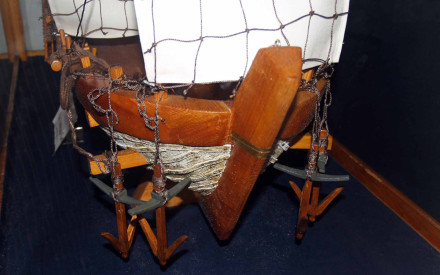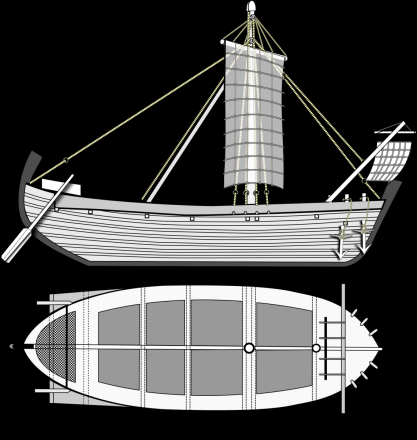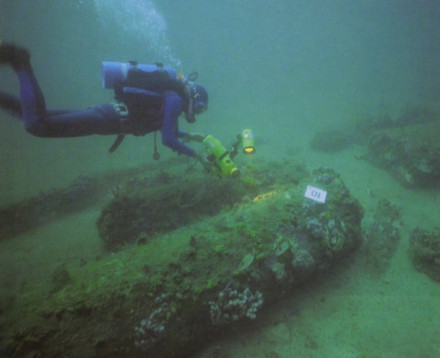History
Discovery
In 1907, at 4.7 kilometers off the coast of Tunisia near the city of Mahdia, a shipwreck was found by Greek sponge fishermen. Several diving expeditions were undertaken to lift artefacts from the wreck between 1907 and 1913 under the guidance of French archaeologist Alfred Merlin. He was Director of Antiquities in Tunisia, which was a French protectorate in that period, and most of the finds ended up in the Bardo National Museum (Musée National du Bardo, one of the foremost museums in Northern Africa) in Tunis. In 1948 Philippe Tailliez and Jacques-Yves Cousteau researched the wreck. The first extensive excavations were done in 1954-55 by the 'Club de Recherches Sous-Marines de Tunisie' under the guidance of Tunesian engineer Guy de Frondeville. This was the first time that the wreck was properly mapped and examined. In 1993 maritime archaeologists from the LVR Landesmuseum Bonn documented the state of the wreck.

Cargo
The ship was presumably driven towards the North African coast by a storm while en route from Piraeus, the port of Athens, to Italy, since it was mainly carrying high value Greek works of art intended for Roman purchasers, such as sculptures of bronze and marble. High-quality furniture fittings and over than 60 marble columns weighing 200 tons were also found on board. It is believed the cargo may have been part of the spoils of war of the Roman general Sulla, who campaigned against king Mithridates in 86 B.C., and sacked Athens during that war.

Boethus of Chalcedon (2nd century BC)
Boethus was a famous Greek sculptor and metalworker. His signature occurs on the bronze archaic herm (a stylised type of statue that was often placed on borders or crossroads to ward off evil) depicted above, that was found in the Mahdia shipwreck. This particular herm supported a statue of a winged youth identified as Eros or as Agon. This Boethus was probably also the famous engraver mentioned by Pliny (Natural History XXXIII.lv.155) and Cicero (Against Verres IV.xiv.32).
Many other artifacts and statues were found on the shipwreck, making it one of the most important antique shipwreck finds.

Description
A Roman or Greek merchant vessel, possibly a corbita (the most common Roman merchant ship type).

| Length | 131 ¼ feet (40 m) |
|---|---|
| Width | 46 feet (14 m) |
| Tonnage | 230 ton (115 last) |
Status
In 1993 maritime archaeologist from the LVR Landesmuseum Bonn documented the state of the wreck and made video recordings of the site. This survey indicated that the remains of the wreck were deteriorating.

References
- Hellenkemper Salies, G.; Prittzwitz und Gaffron, H.-H.; Bauchhenß, G. (Hrsg.) (1994).
Das Wrack. Der antike Schiffsfund von Mahdia.
Katalog des Rheinischen Landesmuseums Bonn, 2 Bd. - Hellenkemper-Salies, G. u.a. Neue Forschungen zum Schiffsfund von Mahdia. Sonderdruck aus Bonner Jahrbücher 196, 1996.
- Deguwa.
Tunesia, Mahdia.